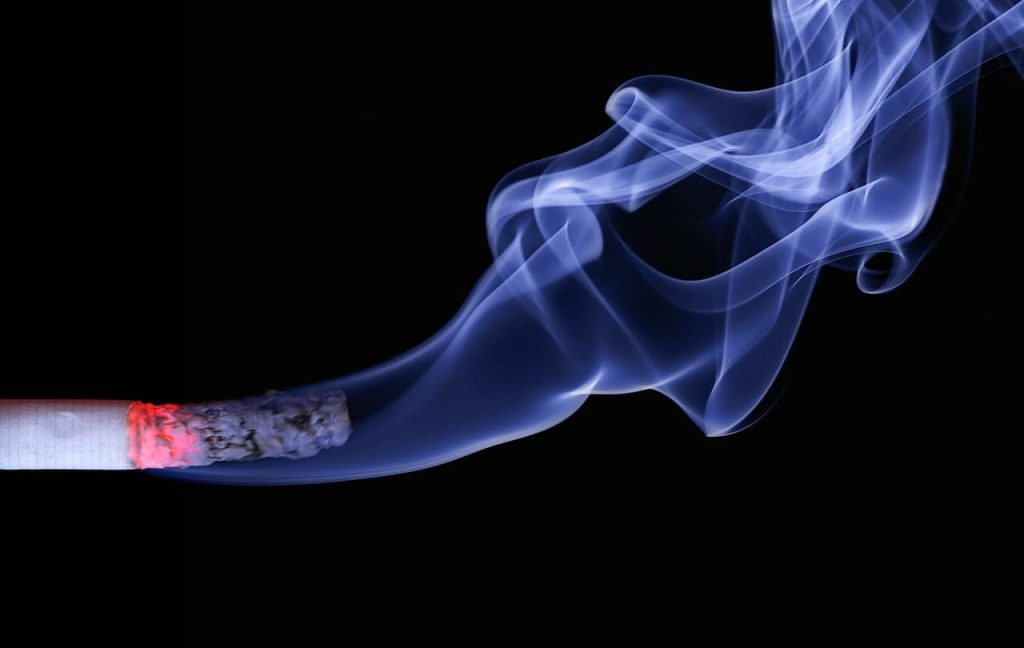Written by Hafsah Ganatra and Edited by Myra Ali

In 2016, around 15.5% of adults in the U.S. smoked cigarettes [1]. Beyond the health consequences directly affecting smokers comes the prominent health threat to a smoker’s surroundings in the form of second-hand smoke. Every year, approximately 41,000 people die due to diseases caused by second-hand smoke. Affecting babies, children and pregnancies, second-hand smoke can be unstoppable and deadly [2]. However, third-hand smoke, a lesser-known consequence of smoking, is proving to have detrimental effects on the health and surroundings of a smoker as well. Recent studies have demonstrated that third-hand smoke can become airborne after years, thus proving to have longer-lasting consequences than previously expected [3].
First-hand smoke is defined as the tobacco or nicotine smoke directly inhaled by smokers into their lungs. Meanwhile, second-hand smoke, or environmental tobacco smoke, refers to the smoke that is exhaled by a smoker or the smoke emitted through the tips of cigarettes and is most detrimental to infants [4]. On the other hand, third-hand smoke is the residue remaining from the tobacco in dust and on other surfaces [5]. Though currently the least studied route of exposure, recent research on third-hand smoke has determined that the residues left behind can become airborne once again. In a study conducted by Drexel university, researchers found that non-smoking classrooms had traces of tobacco smoke deposit despite being smoke-free for years. This third-hand smoke residue was caused by the airborne flight of the particles that became distributed through the building’s ventilation system from outdoor locations that permitted smoking. The study’s new finding describes the dangers of third-hand smoke as it possesses the ability to also travel through the air and affect locations near smoking areas. Other properties of third-hand smoke demonstrate its long-lasting ability, as residue can remain for up to six months after the initial exposure to surfaces such as skin, clothing, furniture, walls and homes [6]. Residents of these homes were found to be inhaling these particles as they accumulated, allowing for potential health and environmental hazards.
Although currently not as studied as exposure to first- and second-hand smoke, the health hazards pertaining to exposure of third-hand smoke still exist. Pollutants released through third-hand smoke can affect people through inhalation and ingestion [7]. Exposure through the skin also presents potential health hazards. Nevertheless, more research is needed to determine the actual long-term health effects of third-hand smoke. Currently, the best way to fully limit exposure to third-hand smoke is to increase the amount of smoke-free sites and to replace surfaces directly exposed to nicotine [7]. As more research is conducted on third-hand smoke, it is important to raise public awareness of the dangers it can possess and allow for action to be taken for a safer and healthier environment.
Resources:
[1] “Smoking & Tobacco Use.” Centers for Disease Control and Prevention, Centers for Disease Control and Prevention, 15 Feb. 2018.
[2] “Health Effects of Secondhand Smoke.” American Lung Association, American Lung Association, 2018.
[3] “Third-Hand Smoke.” Action on Smoking and Health, Scotland, ASH Scotland, June. 2018.
[4] Matt, G.E, Quintana, P.J.E., Hovell, M.F., Bernert, J.T, Song, S., Novianti, N. 2004. Households contaminated by environmental tobacco smoke: sources of infant exposures. Tobacco Control. 13: 29-37.
[5] DeCarlo, P. F., Avery, A.M., Waring, M.S. 2018. Thirdhand Smoke Uptake to Aerosol Particles in the Indoor Environment. Science Advances. 4: 1-8.
[6] Matt G.E., Quintana, P.J.E., Zakarian, J.M. 2017. When smokers quit: exposure to nicotine and carcinogens persists from thirdhand smoke pollution. Tobacco Control. 26:548-556.
[7] Sleiman, M., Gundel, L.A., Pankow, J.F., Jacob, P., Singer, B.C., Destaillats, H. 2010. Formation of carcinogens indoors by surface-mediated reactions of nicotine with nitrous acid, leading to potential thirdhand smoke hazards. Proceedings of the National Academy of Sciences of the United States of America. 107: 6576-6581.